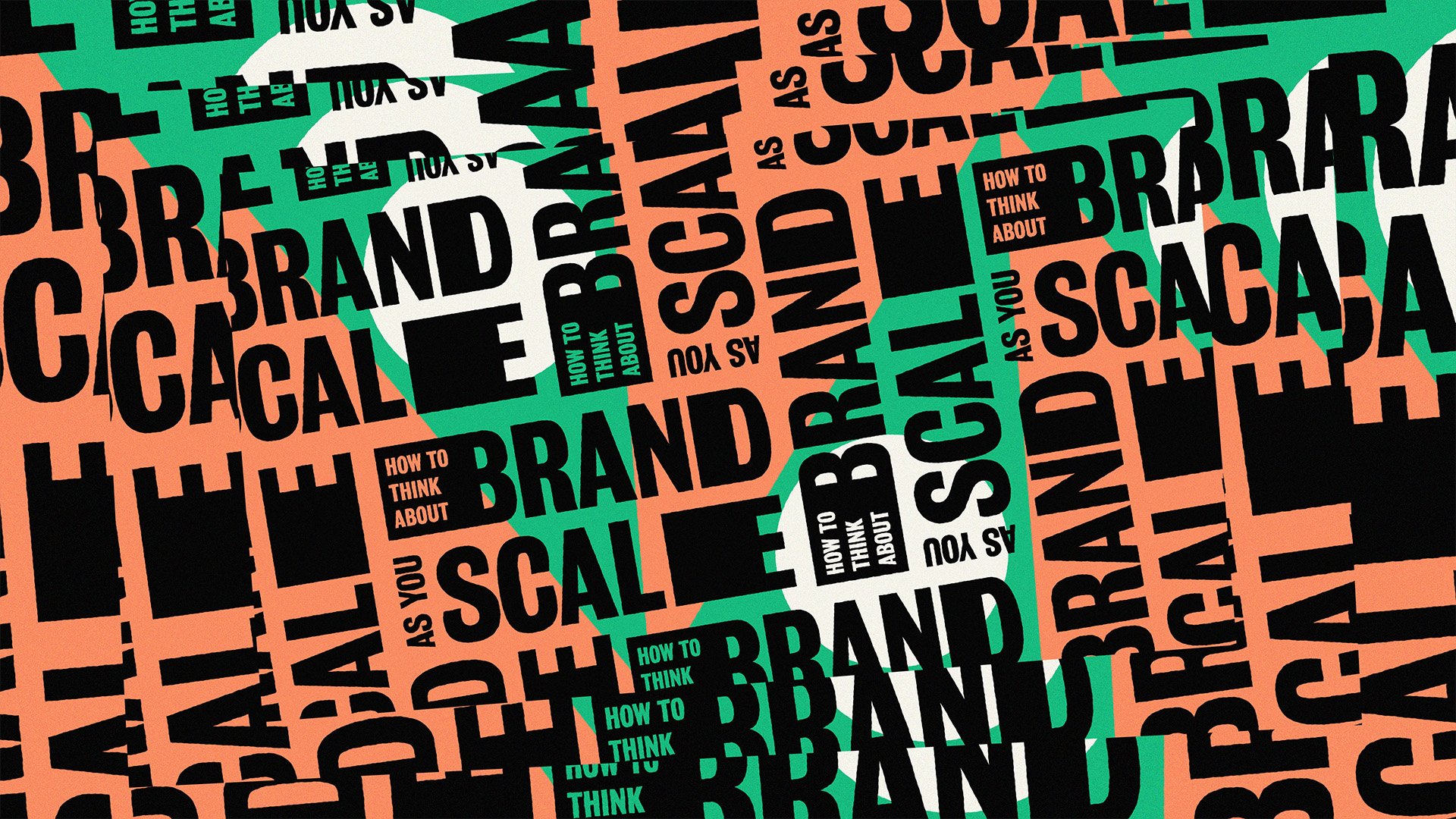
How to Think About Brand as You Scale
A brand is so much more than a logo or a set of colors. Your brand is made up of every interaction that shapes the way people feel about your business. It sets the expectation of who you are, what it’s like to work with you, and the value you provide. This perception shapes a person’s willingness to try your product, renew your product, advocate for your product, and more.
In each stage of your growing business, brand should be thought about and treated differently, because it can provide different value to your business at each stage. Your brand identity should be shifting and growing as you grow, and should be treated differently as an early stage startup, a growing startup, a scale-up, and an established business.
Brand as an early stage tech startup
In the early stages of your company, your brand needs to be efficient and clearly communicate what you do, while also being functional and flexible. Don’t over-invest in brand in the early days; tech companies will (or at least should) change immensely week by week, and you will waste time and resources if you spend too much on brand right off the bat. Instead, focus on the primary channels that your brand needs to live on: If you need to generate funding, this might mean investing in your pitch deck. If your customers are most accessible through a website, then focus your brand (and spending) on that.
As a startup, you should think about a brand like you think about your first apartment, not your dream home. Focus on the must-haves, not the nice-to-haves. Your brand should establish credibility and save you time in telling your company story. Create something for your internal team to rally around and for your customers to resonate with.
Brand as a growing startup
At this stage, you have customers and some amount of money to work with. Now is the time to figure out what is working in your current brand, and what isn’t. If your customers are confused about what you do, you aren’t articulating your company clearly and this is the time to fine tune that.
As your company grows, so do people’s standards and expectations. They expect a polished, consistent brand across all channels. Without this consistency you risk losing credibility, and likely losing business. Fill in the details that weren’t there before, and work on developing a consistent brand identity across all channels (website, pitch decks, etc.) rather than just the important ones.
Brand as a scale-up
When your company is scaling, this can mean you have new offerings, features, or are now catering to an entire new audience (or even industry) of customers. In this stage, your brand needs to either grow up to include the new offerings, grow out to include your new audiences, or both. This is the time for a brand refresh. The early startup stage was bare bones, the growing startup stage was fine tuning what you had, and this stage means hiring an outside agency to take a outside look at your company, and how your brand should complement it.
This isn’t your first apartment, or even your second one: This is the time to dream up what your dream home will look like. The brand that got you here isn’t going to take you to the next stage. You’ve had growing pains, a changing client base, and time to figure out who you really are. Your company has outgrown the first version of your brand, and needs to be refreshed in order to match the company you are today.
Brand as an established business
By now your company is doing one of three things: growing by acquisitions, adding new products, or growing your current client base. A lot of brand work now becomes telling the same story you’ve been telling for so many years, and now you need to figure out how to maintain that compelling story through to acquisitions and growth. You need to figure out how your brand works with new product lines, and ensure that everyone is still aligned to the company’s core mission. Especially when your company is making acquisitions at a pace of one or two a year, your brand can go from strong to deteriorated in a very short time.
To maintain consistency, this stage usually involves a light refresh. The larger your company grows, the less dramatic your brand updates will be. Though the tweaks are smaller, the financial impacts will be bigger. It is important that all changes are strategic, because little changes can cost millions. Additionally, every rebrand in this stage, though necessary, means a loss of trust on the side of the consumer. Therefore, this moves need to be conservative, and consistent across all channels.
Whether your company is just starting, growing, scaling, or established, your brand is more than just a logo or a color palette; it is the identity that your customers will connect with, and the impression that you leave with them. Businesses with strong brands are more resilient, charge premium prices, and enjoy lower customer acquisition costs and churn rates. But to build a strong brand means spending the appropriate amount of time and money on your brand in each stage.



